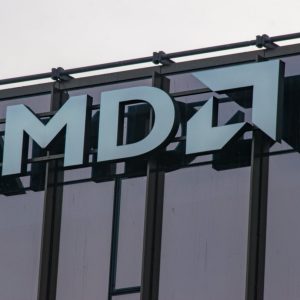
After a night in Manchester, Tech Monitor’s series of hybrid cloud-focused roundtables returned to London in mid-May. The event, again delivered in association with Lenovo, brought together a dozen senior IT managers, architects, engineers, and infrastructure specialists to share ideas and insights as well as explore experiences of public, private, and hybrid cloud deployment.

Two-speed cloud adoption
Nights like these offer a useful corrective to received wisdom. The common assumption is that after a decade of mainstream public cloud adoption, all organisations are deep into their cloud journey. Sometimes that is the case. Many are so deep, in fact, that they are reverse engineering – or repatriating – cloud workloads and bringing them back on-premise. But for other organisations, the journey to the public cloud has only just begun. These businesses are still making the case to those around them that there are advantages to be sought.
Sometimes those taking baby steps are in industries that typically arrive later onto the new technology adoption curve – think construction, for example. But it is not always the case. One bank represented at this event was drawing up plans but was not yet in cloud development. It may be an outlier among financial services firms but this bank’s caution is a reminder that some companies are impervious to the hype that often surrounds new technology. This suggests that despite the current noise around generative artificial intelligence (Gen AI), we may still have AI laggards ten years from now. And that’s no bad thing. Why? Because the first mover is not always advantaged.
Challenging cloud absolutes
The beauty of having organisations around the table at different stages on their adoption journey is that it allows for lessons learned to become lessons shared. For example, some of the absolutes of the cloud – that operational expense trumps capital expense or that cloud is always better than on-premise for applications with peaky traffic – are worth rethinking. One attendee, evoking the emerging discipline of FinOps (financial operations), noted that the finance department often prefers fixed upfront costs to unpredictable pay-as-you-go charges.
Meanwhile, familiarity suggests that the promise you can always dial up and dial down capacity on the cloud as required does not always materialise. “Our experience is that cloud provisioning is not fully dynamic or granular,” said one attendee. This reflects an argument made in Manchester by one attendee who said that priority compute went to those who paid for higher levels of compute all year round.
Why hybrid?
These lessons learned have led a lot of organisations to the conclusion that a hybrid cloud strategy might be the best approach. Mixing and matching public cloud and private data centre deployment while accessing cloud-like services regardless of location, hybrid cloud appears to offer a Goldilocks-like solution – not too hot, not too cold. Here some absolutes do emerge. Example one: applications requiring low latency (from trading floors to retailer websites) are better off on-premise while those where speed is a secondary concern belong in the cloud. Example two: the cloud is a cost-effective solution for archiving data that is rarely accessed. If, however, you have a database that’s being ‘pinged’ every two milliseconds, it’s wiser to keep it on-premise.
Azure, AWS or GCP?
As has become customary at these events, guests were asked which of the so-called hyperscalers had they adopted. The straw poll – unscientific but indicative – showed that almost all organisations represented were users of Microsoft Azure, and users beyond simply subscribing to Office 365 productivity tools. Meanwhile, 40% said they used AWS and a similar percentage Google Cloud Platform (GCP). Just under half relied on the services of two or more hyperscalers.
The prevalence of Azure users reflects results of similar straw polls at previous events. Google’s offering proved more popular than it had before. Asked why his firm used GCP, one attendee said he believed it was more capable of handling big data. Another attendee asked if there is an obvious cost advantage of using one hyperscaler over another? The consensus answer was that it depends on the use case. Moreover, it probably depends on your negotiating prowess. When dealing with a big cloud provider, said one guest, “you need to put three people in the room – one that understands your workloads, a financial modeller, and the best procurement negotiator you can find.”
‘Unlocking growth through hybrid cloud’ – a Tech Monitor roundtable discussion in association with Lenovo and Intel – took place on 15 May 2024 at the South Place Hotel, London.






